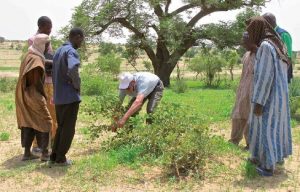African farmers are successfully tackling the environmental dilemma that Western experts couldn’t – and the results can be seen from space!
Just weeks ago I walked through Uganda’s largest refugee camp, Bidi Bidi, where more than 270,000 survivors of war, persecution and famine are struggling to rebuild their lives. Every week more people arrive. And every week, more trees are cut down for firewood and shelter.
What was once more than 250 square kilometres of bushland, with scattered villages, is now an ever-growing dustbowl.
It’s a dilemma that aid organisations grapple with across the world.
With the average refugee using more than 3.5 kilograms of wood a day, every last tree at Bidi Bidi will be gone within three years.
Some suggest planting more trees, but I know from hard experience that this, on its own, is rarely the answer. I was among those who planted thousands of trees in Niger in the 1970s, only for the majority to die in the scorching heat, or to be used for fuel and housing. It was an expensive failure.
Re-growing forests is essential to the well-being of humans and ecosystems. Not only do forests provide fuel and building materials, they buffer us from the extremes of climate change. Moist forest floors retain water and help protect us from drought and flood. Trees on farms even improve soil fertility and the microclimate, increasing crop yields, fodder availability and livestock productivity.
But how do you convince some of the poorest people in famine-prone areas that they shouldn’t chop down trees, when they need firewood to cook today, otherwise their families won’t eat?
And what do you do when extensive tree planting doesn’t work?
Click here to read more.
Originally published on the Ten Daily website.





